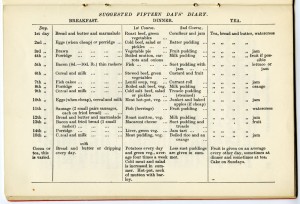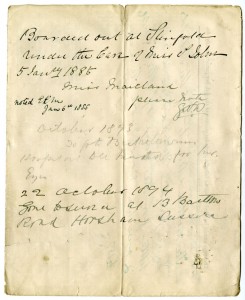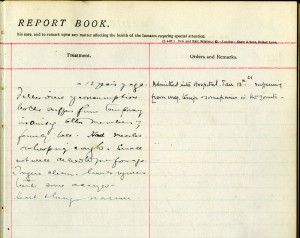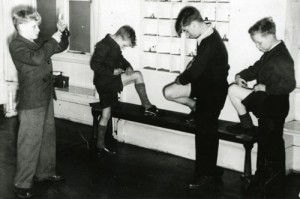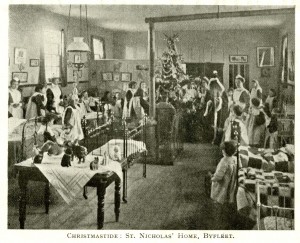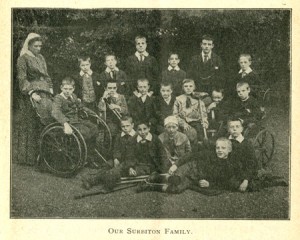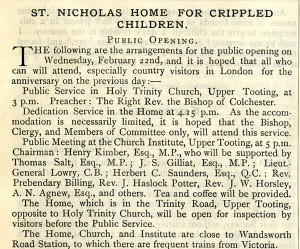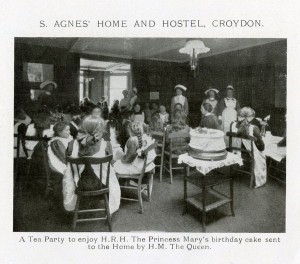Today’s post is written by Rod Cooper, one of the volunteers helping us with the Including the Excluded project. As part of the project some of the volunteers have been writing summaries of a selection of case files; the aim is to highlight examples of the experiences of disabled children while in The Children’s Society’s care.
The following is an account of a boy who came into The Children’s Society’s care in its earlier years – 1895 – when it was known as the Waifs and Strays Society.
***
Case File 4688 – John Robert Hall – is interesting as it illustrates the various approaches employed by The Society to help and assist children, and prepare them for a fulfilling and self-supporting adulthood. John was born disabled (he suffered an impairment to his left hip) and into an extensive but immeasurably poor family, supported entirely and solely by the endeavours of their mother, Elizabeth Hall. John’s family lived in Huntingdon.
An unusual aspect of John’s case is the support provided by a local peer. In preparing his application, a supporter solicited the interest of the local Earl of Sandwich. After visiting the child and his family, Edward Montagu, 8th Earl of Sandwich, agreed to bear the cost of John’s care for its duration.
John entered The Society’s St Nicholas Home for Crippled Children at Byfleet, Surrey, in 1895, as a seven year old. He remained there for little more than one year, and because it was deemed that he did not require either specialist nursing or surgical treatment, he was considered a good candidate for boarding out. Consequently, in mid-1896, he became a foster child under the care of a Mrs Hinchley, who lived in the small village of Bunwell in Norfolk. John remained with Mrs Hinchley until late-1902. Throughout the period of his fostering in Bunwell, The Society maintained an interest in John’s progress and development, before deciding in December 1902 – shortly before his 16th birthday – that he was suitable for placing in one of The Society’s industrial schools, specifically for learning the trade of tailoring. Consequently, John was provided with a place at The Society’s Industrial School in Copenhagen Street, Islington.
There is no indication on John’s file of whether or not he was in contact with, or was contacted by, his mother, during the period since entering the care of The Society. However, in early 1903, The Society did hear from John’s mother with the news that she was to marry the following Easter, and that she wished her son to be returned to her. John’s mother had moved to London and was employed as a housekeeper. After consulting with the various interested parties – including John’s benefactor and those who had prepared his initial application – The Society returned John to his mother in February 1903. It is also evident from his file that he had recently commenced his apprenticeship as a tailor.

